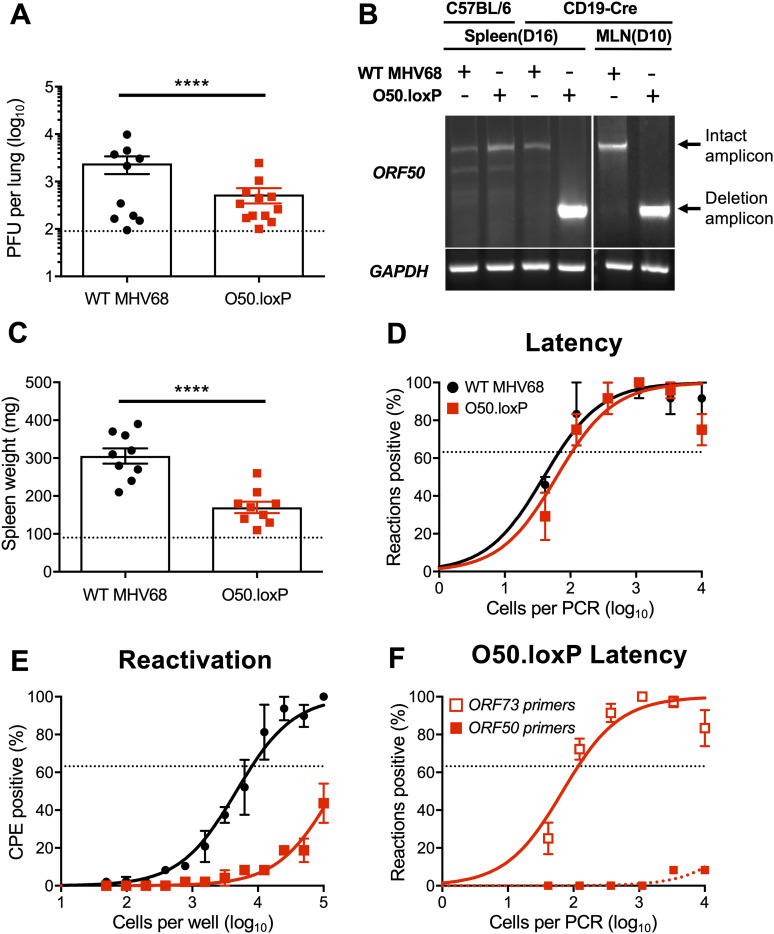FIG 3.
O50.loxP replicates efficiently and establishes latency, but reactivation is impaired in CD19-Cre mice. CD19-Cre mice were infected IN with 1,000 PFU of the indicated virus. (A) Mice were sacrificed on day 7 postinfection, and viral titers in lung homogenates were determined by plaque assay. Each dot represents one mouse. (B) Total DNA was isolated from spleens or lymph nodes of infected C57BL/6 or CD19-Cre mice on days 10 or 16 postinfection with the indicated virus. PCR was performed to evaluate the integrity of the ORF50 locus or GAPDH as a control. (C to F) Mice were sacrificed on day 16 postinfection. (C) Spleens were harvested and weighed as a measure of splenomegaly. The dashed line indicates the average mass of spleens from mock-infected mice. Each dot represents one mouse. (D) The frequency of cells harboring MHV68 genomes was determined by limiting-dilution PCR analysis. (E) Reactivation frequencies were determined by ex vivo plating of serially diluted cells on an indicator monolayer. Cytopathic effect was scored 2 to 3 weeks postplating. (F) ORF50 deletion was confirmed by comparing limiting-dilution PCR analyses performed using primers specific for either the ORF50 locus or ORF73 locus. Groups of three to five mice were pooled for each infection and analysis. Results are means of two to three independent infections. Error bars represent standard error of the means. **** denotes P < 0.0001 in a two-tailed Student’s t test.

